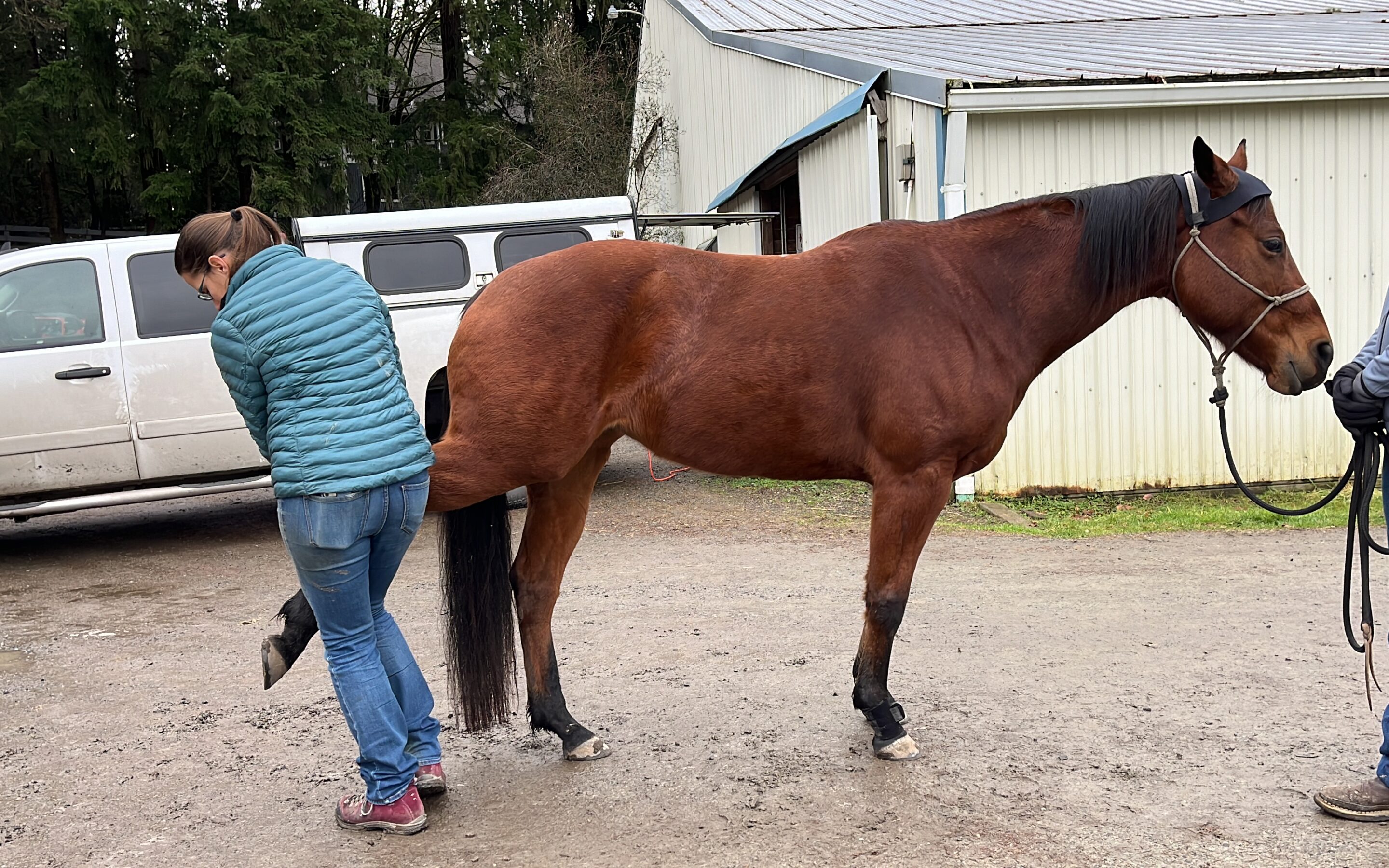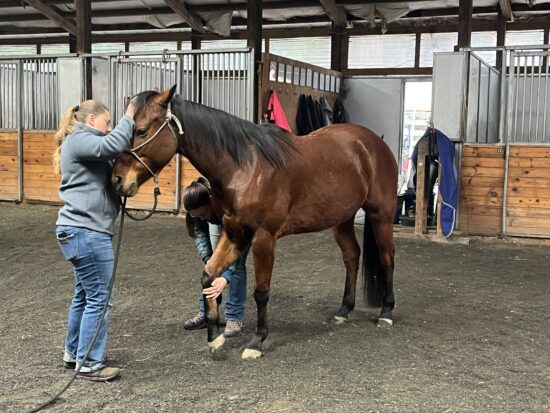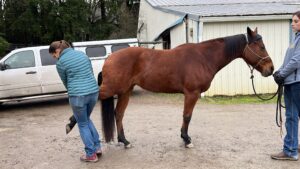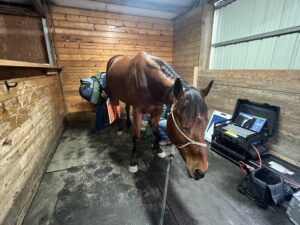The topography of a horse tells a story, albeit usually one in a language we only partially understand. Each scar, bump, and blemish they arrive with has a history attached. We can draw assumptions, make educated assessments based on professional opinions and our own previous knowledge, but there exists a degree of mystery in even the most straightforward seeming marks. This says nothing of what exists beneath the surface, the ways in which their physiology has been altered by the care — or lack thereof — shown to them in their time before SAFE. Each horse is a puzzle we hope, and try, to decode to the best of our abilities.
We feel it’s important to learn a little more about the soundness of the horses we are riding or planning on riding than those who will live out their days as a companion. A soundness evaluation is a diagnostic tool that helps grant us a baseline of a horse’s movement, and allows us to be more transparent about what their future might look like for an adopter.
We also want to take a moment and share what our vets told us about such evaluations, specifically as they relate to flexion tests. While these flexions do impart a degree of information regarding how a horse might perform when under a significant degree of work, or when under a high workload for extended periods, they are designed to put the joints in a high degree of strain which is not common in what is typically asked of a horse. Also, the results may vary by day, month, year. Flexion tests can be a helpful diagnostic tool, but the likelihood that even the most sound horse will flex positive at least once in their life is very high.
Wren recently underwent a soundness evaluation, more out of a new routine than for any billowing red flags. If anything she is in possession of a few pink flags, and as she will be soon be coming up for adoption, we wanted to have her checked out to be able to best represent her.
Since her start here at SAFE, she has had a slight headbob when moving out. We put her in scoot boots during work, which has helped her soundness, and we were curious if the evaluation would show anything. Under saddle, she has a difficult time picking up her right lead canter, which was another point we hoped to receive some enlightenment on.
On the inside of her left hind, down on the long pastern, Wren has a bony protrusion, about half the size of a golf ball. Here is a perfect example of one of those topographic mysteries — this was something that Wren arrived with, a literal piece of her with an attached story we will never be privy to. As part of the soundness evaluation, we would have our vet check this out as well.
Soundness evaluations follow a mostly straightforward path. Our vets palpate the horse’s neck, back, and limbs to check for abnormalities. Wren palpated primarily normal, with a little bit of mild sensitivity to her SI region.
They ran her lameness evaluation with a lameness locator, which uses sensors to record movement and detect lameness that may be challenging to see with the naked eye. It also helps to confirm what the vet is seeing. Both lameness locator and vet noted evidence of a slight RF lameness on hard ground. On soft ground, she lunged sound.
Flexion tests showed mild positive results centered around her right hind.
Because of this, we chose to proceed with radiographs of the right hind hock, as well as to check out the bump on her left hind to see if it was causing any issues. Her hocks showed up ‘clean,’ with no abnormalities noted. The bony prominence, thankfully, was revealed to not involve the joint — radiographs showed the joint looking healthy. Our vet’s opinion was that it was caused by some sort of traumatic injury in the past.
The overall report from the day was that her baseline lameness was primarily right front, with the recommendation being to put her in front shoes with the hopes that the issues clear from there. The hind end lameness was a little less easy to diagnose — our vet had us trial Wren on Equioxx to test for an inflammatory component. With that trial under way, we will reevaluate in a week to determine what change, if any, it has had, and to discuss potential next steps from there.
You can see Wren’s baseline movement in the video below. It is difficult to accurately judge movement from a video, but you can get an idea of how she lunges generally.





